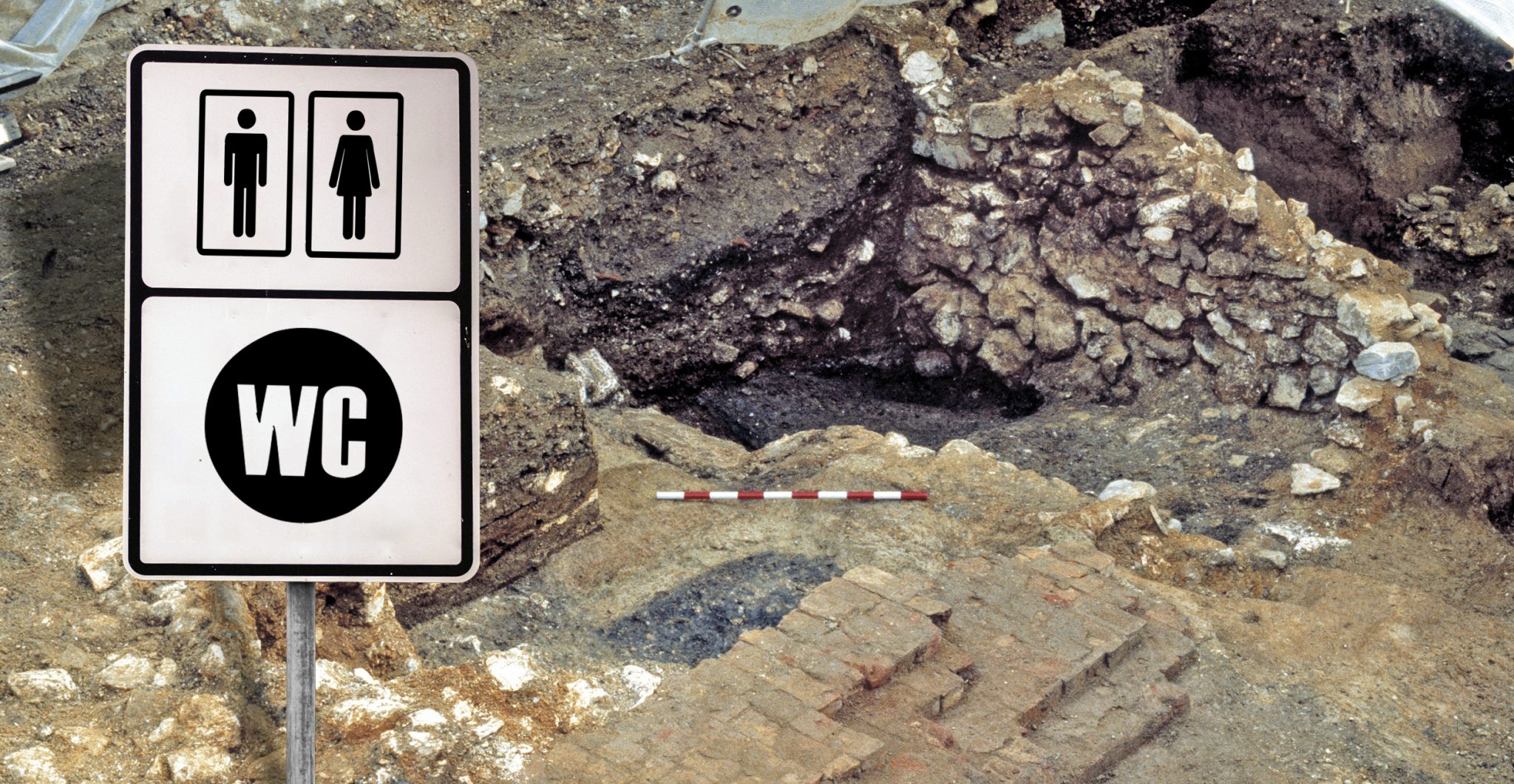Archaeologists find treasures in the oddest places, for example the precursor to the modern bathroom, a Medieval cesspit. In a city like London, excavation almost always leads to surprising finds; after all, it’s been around since the Romans settled it,, a place settled almost 1,000 years ago. It’s a city built on many layers, in a way — layers of other cultures, other societies, and other lives.
So when the Courtauld Institute of Art, in Somerset House, began renovations, they soon had to alert the experts at the Museum of London Archaeology (MOLA) that workers had found something very unusual — a massive, cesspit almost 15 feet deep, a medieval version of what we today call a bathroom — or what in Britain would be called a loo.
During excavations in the basement of @CourtauldGall we recently uncovered an enormous cesspit, thought to be part of Chester Inn, one of the lost medieval mansions that provided London residences for regional bishops along the Strand! Read more: https://t.co/GI9xH53cSC pic.twitter.com/RJVo5nZfsh
— MOLA (@MOLArchaeology) January 27, 2020
During the excavation archaeologists came upon jewelry, ceramic dishes, tableware, an iron spur and a decorative tile that would have been used in a palace or a monastery. In total, they uncovered almost 100 unique Medieval artifacts in a place that is usually used solely by people. Apparently, folks long ago either chucked items down into the cesspit deliberately or dropped them accidentally. Either way, it’s now a treasure trove for experts trying to understand more about the people who lived during those years.
The cesspit was found to contain a range of fascinating finds discarded in its depths, including a ‘Penn’ floor tile, delicate finger ring, spur, bone-handled fork, and a range of pottery drinking vessels and tableware from the 14th and 15th centuries. pic.twitter.com/6MIS7cpryI
— MOLA (@MOLArchaeology) January 27, 2020
Somerset House is located on the Strand, an upscale stretch of London road a short distance from Trafalgar Square and Fleet Street. It was once an area lined with bishops, wealthy families and their estates, and experts say the cesspool was likely part of the Chester Inn, a 15th century mansion which stood in the same location centuries ago.
We’ve created a 3D @Sketchfab model of the 15th century cesspit we found under @CourtauldGall so that you can take a look around! Can you spot where a latrine was added in the 18th century? https://t.co/oqcxN2HbDc pic.twitter.com/bGLS29AlCQ
— MOLA (@MOLArchaeology) January 27, 2020
MOLA archaeologist Antonietta Lerz said in an interview with the Guardian, “We just kept going deeper and deeper… To find something of that size — and all the finds that came out of it as well — is very unusual.” Each time the team went down into the pit, she added, “something else came up.”
It is not just the artifacts that are significant; it’s the clues they give historians and archaeologists about the medieval period that are so important. Grand estates once lined the Strand, but they are not fully understood because detailed records, about who built them and what families occupied them, were not kept. Hence, the cesspit is rather like a tunnel offering new information about those occupants and how they lived.
Historian Simon Thurley is one expert who was thrilled by the discovery. He told the Guardian, “It’s unusual to get this excited about a cesspool, but this gargantuan piece of work is the only link we have between medieval settlements on the Strand and the subsequent palace… we will begin to understand more about who built and used such an enormous pit. It’s an incredibly significant find,” he enthused.
Lerz agreed. In the Guardian interview, she said, “This is certainly not your typical find,” and represents a fascinating glimpse into the many levels and layers of history beneath the current building. It’s quite unusual to find so many complete or almost complete ceramics.” The team is still performing tests on the artifacts, but hope to have them ready for display at the Courtauld Institute by the spring of 2021, so the public can see the rare objects found.
Related Article: The Chastity Belt – Medieval Myth or Reality?
It is another example of what can happen in an ancient city like London when a renovation to modernize and expand a building offers up keen insights into the past. Finding these treasures in what was once a loo is an odd situation indeed, but archaeologists, like scientists of all disciplines, know that secrets of the past can be discovered in the most unlikely places. Even in what was once a 15th century bathroom.
